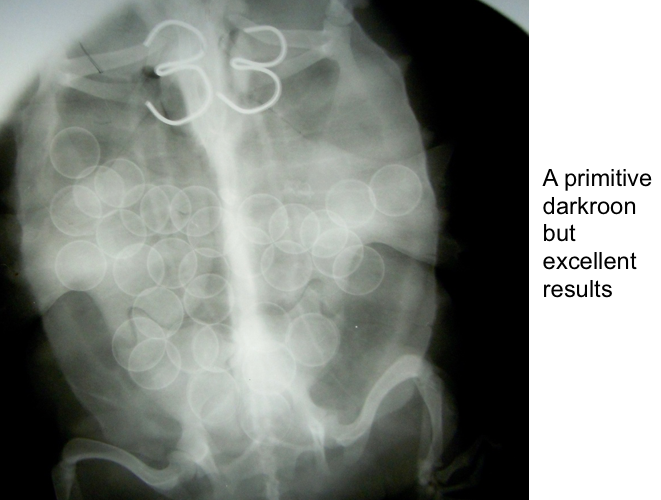Methods to determine the number of eggs in a clutch
During our work with RES we depended on palpation to determine how successful an induction had been.
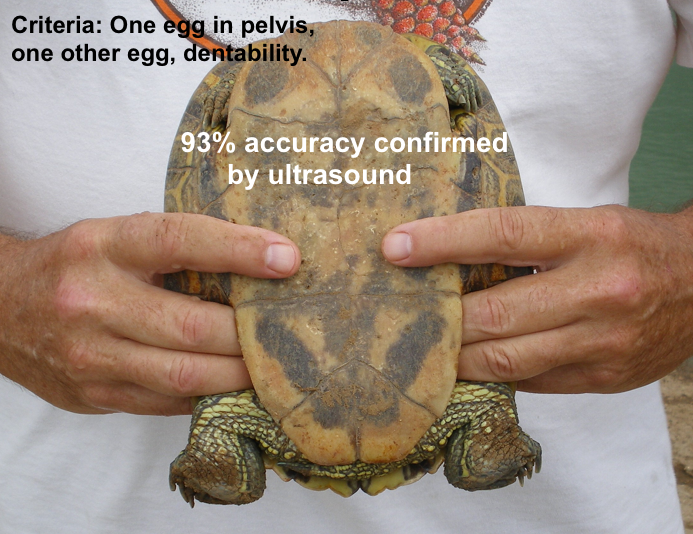
An induction was only classified as successful if no eggs were palpable afterwards. In 2009 we did a study and palpated 46 RES after induction. There were three examiners. Results were checked by ultra-sound. The outcomes in the table below showed an accuracy rate around 93%. That is, 93% of the time the examiner would be correct when checking a turtle for eggs post-induction.
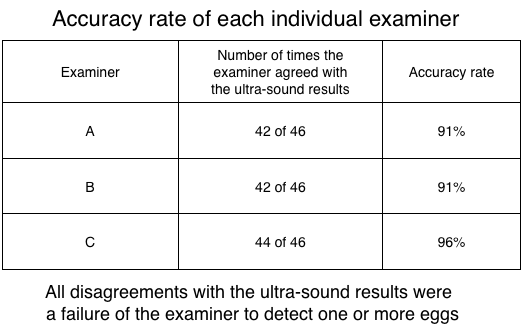
When we decided to work with spiny soft shells (SSS) palpation was not possible because of their large size. We tried ultra-sound but that could only tell us if there were eggs, not how many eggs there were.
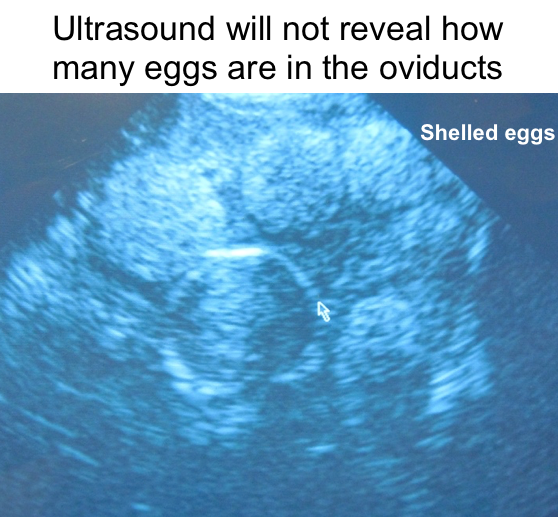
So we turned to x-ray as our method to determine the number of eggs in these much larger turtles. Our funds were limited but we managed to secure the loan of a handheld, portable, Nomad dental x-ray machine. This machine had a low output so it took 3-4 seconds to get a good film.
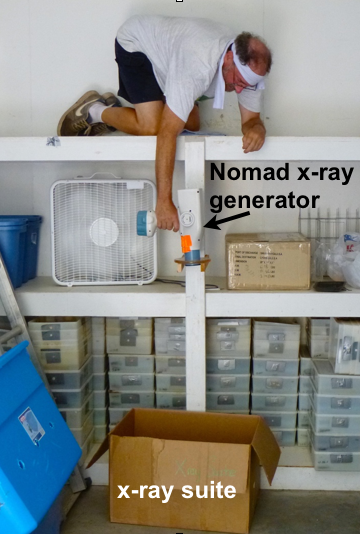
Each spiny soft shell turtle had to be washed before being x-rayed. They did not like that very much so the turtles would make a sincere effort to rip my face off as I leaned over them to do the job. After washing they were placed in the “X-ray suite.” A cardboard box with the x-ray cassette on the bottom was the X-ray suite.
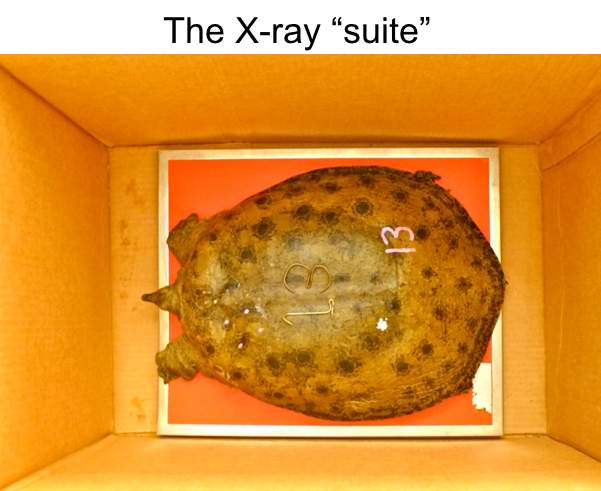
Amazingly, the SSS remained still most of the time while in the box. We developed the 11 x 14 inch films in a primitive darkroom.
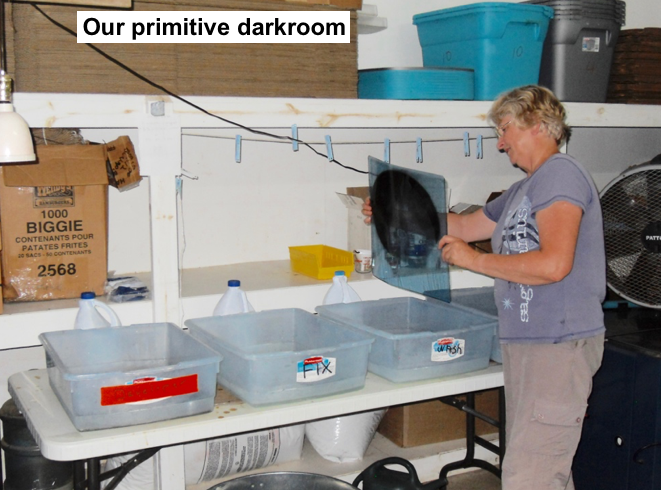
The gear was pretty basic but the results were excellent as you can see below.
